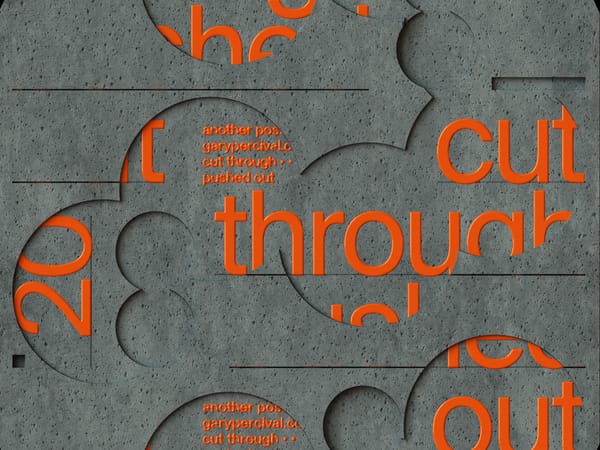Nailing the LittleThings: How Small Details Can Make a Big Difference
We all know that the little things matter.

We all know that the little things matter.
That’s why we take the time to do things like proofread our work, make sure our portfolios are updated, and double-check our social media posts before hitting "send." But when it comes to nailing the small details in our workflow, we often let them slide. After all, who has time to worry about the minute details when there’s so much big-picture stuff to take care of?
As it turns out, paying attention to the small details in your workflow can make a big difference.
From improving your efficiency to ensuring quality control, taking care of the little things can have a major impact on your business (and bottom line).
Here are just a few examples:
The power of first impressions—why making a good first impression is important
Making a great first impression is of paramount importance, especially in the age of digital communication.
It can be as simple as offering a firm handshake or finding something complimentary to say. If you approach each interaction with thoughtfulness and the intent to make a positive impact, your attentiveness and caring attitude will not go unnoticed. First impressions are the launchpad for future encounters and building relationships, paving the way for deeper understanding and creating trust between two people.
How you treat someone right off the bat builds an image or opinion that will persist through future interactions.
Even if you aren't in constant contact with someone, they could be a valuable resource at some point in your life, which is why it's critical that your first encounter leaves them feeling respected and inspired.

The little things matter—how small details can make a big difference
Every success story is made up of small details that come together to make a big difference.
It may not seem like the little things make a huge impact, but when we pay attention and dedicate our focus to nailing those little details, it changes the game entirely. The small details—whether it’s researching before an important phone call or taking the time to check emails twice—can set you apart from the competition as well as ensure you are on top of all your tasks. Doing the "little things" right shows effort, dependability, preparedness, and diligence—qualities that can rarely be achieved without attention to detail.
It might take a bit of extra effort, but nailing the little things will always result in remarkable outcomes.
How to make an excellent first impression—tips for nailing the little things
No matter what the occasion, making a good first impression is critical.
Small details can speak volumes and make or break your ability to achieve your goal.
Confidence is one of the most important factors to consider. Showing up with a positive and upbeat attitude can demonstrate your enthusiasm rather than your worry. Making sure to dress the part is also important; wearing something appropriate for the occasion and well-kept can make a big difference.
Being prepared is another way to make a good first impression.
Ensure that you have all of the necessary information or materials, from business cards to references. Having everything on hand demonstrates that you are well-organised and prepared.
Being an active listener can also be an effective way to make a good impression. A genuine interest in what someone has to say demonstrates your respect for them and helps to build a positive rapport. This process also includes asking engaging questions and demonstrating thoughtfulness.
Additionally, when conversing, make eye contact and listen actively rather than becoming preoccupied with your phone or zoning out during conversations. These small gestures express gratitude to those around you and make for a pleasant conversation for both parties involved.
Preparing ahead of time will help you get off to a good start and leave a lasting impression on the people you meet.

Why paying attention to detail is important—the benefits of being detail-oriented
Being detail-oriented has a wealth of benefits.
When done right, it can help improve the quality of your output, increase accuracy and consistency, and make a great impression on customers and co-workers alike. It also helps ensure that mistakes and oversights are avoided, which can save you time, money and stress in the long run.
More importantly, having a keen eye for details can help you create solutions to complex problems and recognise small opportunities that may have been overlooked. It is an invaluable skill for those in project management or customer service roles, who are often responsible for managing the nuances of a situation or providing reliable support to their team members or clients.
In short, being detail-oriented is essential if you want to achieve excellence in your work.

Design is in the details—it's what makes a design unique and memorable
When it comes to designing, the devil is in the details.
From colour schemes and typography to spacing and imagery, these details can be the difference between an okay design and one that stands out from the crowd. Each small detail adds up and is part of an overall composition—think of them as individual brush strokes making up a larger masterpiece. The details matter because they help tie everything together, creating visuals with emotion that leave a lasting impression on your audience.
So when you focus on nailing each detail in your design, you set yourself up for creating something that’s truly special and memorable.
Paying attention to detail shows that you care about your work and are willing to put in the extra effort
When you pay attention to detail in design, it speaks volumes. It says that you care about the end product and are willing to put in the work to make sure it's done right.
Choosing quality over quantity shows that you value accuracy and strive for excellence in your work.
Making sure all details are accounted for before completion shows that you have taken the time and energy to ensure quality craftsmanship on each project.
In short, paying attention to detail demonstrates a commitment to quality, which every project should exhibit.
Details can make or break a design—they can be the difference between a good design and a great one
Details can truly make or break a design and impact how users perceive the end result.
Paying attention to the small details like colours and fonts is essential—often, small adjustments can really elevate your design to a higher level. What may seem subtle at first glance could have a major impact on the overall appearance of your presence.
Taking just a little bit of extra time to ensure your design exudes thoughtfulness, accuracy, and care in every detail will make all the difference in the world!

When you pay attention to detail, you're more likely to catch mistakes before they're made, which can save time and money
Paying attention to detail can save time, money, and a lot of headaches in the long run.
Making sure to double-check work is an invaluable habit that ensures accuracy and catches any potential mistakes before they are made.
Taking the extra time to provide a thorough review of details can prevent costly rework and setbacks down the line, avoiding headaches altogether.
Investing in quality assurance practices when it comes to design is one key way to pay attention to small details and make sure that the end product meets all the individual requirements needed for success.

Paying attention to detail is a sign of professionalism and respect for your audience
Attention to detail is the cornerstone of any successful design project.
Whether you are designing for a large audience or creating something for yourself, focusing on the tiny details makes all the difference. When you take the time and effort to pay attention to detail, it shows your audience respect and is a sign of professionalism. A well-designed product or service speaks volumes about its creators and is far more engaging than one that lacks care and consideration.
Make sure to not only keep an eye on the big picture but also account for every small aspect, from typography to spacing; diligence in this area will ensure that your work remains memorable and effective.
The bottom line: paying attention to detail matters in design because it's what makes a good design great
As a designer, it is important to understand that paying close attention to detail is the key to making an outstanding design.
Detail creates an optimised experience for the user, taking the project from good to great. When details are overlooked or assumed, important elements can be accidentally left out and compromise the design’s potential quality. Additionally, poor attention to detail could create an unappealing visual experience, leading to a subpar overall impression from users.
Focusing on every aspect of your design at each stage ensures that all necessary components are included and integrated for maximum impact and accuracy. Taking care of the small details results in a polished and seamless product that realises your vision with excellence and professionalism.
Put simply, if you’re serious about creating stunning designs, pay attention to detail!
Design is all about the details, and paying attention to detail is what sets a good design apart from a great one.
How to be more detail-oriented: Tips for paying attention to the little things
Paying attention to the little details can make a huge difference in your work and everyday life.
To become more detail-oriented, start by taking the time to double-check each task you complete. If a task requires multiple steps, consider using a checklist to track your progress and ensure nothing gets forgotten.
Additionally, try to think about how small changes or improvements could make a big impact in the long run—this will help you stay mindful of potential improvements you might miss without focusing on the details.
Taking time for reflection can also be beneficial in making sure that everything has been done thoroughly, from reviewing emails to scheduling meetings with colleagues. Finally, aim to break down large projects into smaller tasks so they don't seem as overwhelming; this way you won't find yourself missing key components because there are simply too many items to manage at once.
Attention to detail is an important skill that can be cultivated with practice and habit-forming techniques. Before long, it will become second nature!
Making a great first impression, nailing the small details in our workflow, and paying attention to detail has many benefits that can help improve efficiency, ensure quality control, impress customers and co-workers, and save time. Design is also all about the details—paying close attention to detail is key to making an outstanding design. To become more detail-oriented, start by taking the time to double-check each task you complete and try thinking about how small changes could make a big impact down the line.
By following these tips, you can start improving your attention to detail today!
Remember, it's the little things that count!



